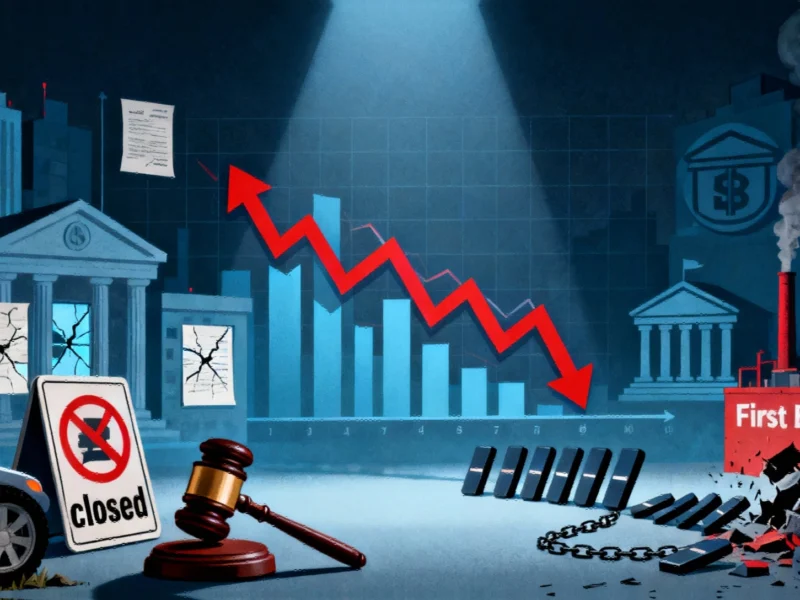The New Frontier for Institutional Capital
Institutional investors are increasingly turning their attention to digital infrastructure, with data centers emerging as a compelling asset class that combines the growth potential of technology with the stability of real estate. As pension funds, sovereign wealth funds, and insurance companies seek to diversify their portfolios, they’re discovering that data centers offer unique characteristics that align with long-term investment strategies. The digital transformation sweeping across industries has created unprecedented demand for computing power, storage, and connectivity, making data centers the foundational infrastructure of the modern economy.
Bridging the Predictability Gap
Traditional real estate investments have long provided institutional investors with predictable, inflation-protected income streams. Triple-net leased properties, where tenants bear most operational responsibilities, have been particularly attractive due to their hands-off nature and reliable cash flows. Data centers, however, present a more complex picture. While they offer long-term contracts with creditworthy tenants and exposure to high-growth sectors, their operational requirements introduce elements of uncertainty that complicate investment underwriting.
The challenge lies in the Service Level Agreements (SLAs) that govern data center operations. These contracts define performance metrics such as uptime, latency, and availability standards. When operators fail to meet these commitments, they face financial penalties that can directly impact revenue. This operational exposure has kept many conservative investors from fully embracing data center investments, despite their compelling growth story. Recent industry developments are now addressing this very challenge, creating new pathways for institutional capital.
The Insurance Innovation Changing the Game
SLA insurance represents a transformative solution that directly addresses the operational risk concerns surrounding data center investments. This specialized coverage is designed to mirror the performance obligations outlined in data center SLAs, providing financial protection against breaches that could otherwise disrupt cash flows. The policy structure is built around predefined, objective parameters, with automatic payouts triggered when performance falls below established thresholds.
This innovation effectively decouples operational performance from financial outcomes, allowing investors to underwrite data centers with the same confidence they bring to traditional real estate assets. The elimination of lengthy claims processes and coverage disputes makes SLA insurance particularly attractive to institutional investors who prioritize transparency and predictability. As we’ve seen with other related innovations in adjacent sectors, specialized insurance products can dramatically alter risk profiles and investment attractiveness.
Transforming Investment Economics
The introduction of SLA insurance creates multiple advantages throughout the investment lifecycle. For acquisition teams, it enables more accurate underwriting by providing certainty around worst-case scenarios. For asset managers, it protects net operating income against unexpected operational failures. For portfolio managers, it creates more stable cash flow profiles that align with institutional mandates.
Specific benefits include:
- Enhanced debt financing – Lenders view insured cash flows more favorably, leading to better loan terms and lower interest margins
- Improved valuation multiples – Assets with insured, stabilized income command premium pricing in the market
- Accelerated capital recycling – Developers can exit stabilized assets faster, freeing up capital for new projects
- Reduced operational complexity – Investors can maintain uptime assurance without bearing full operational risk
The Broader Industry Context
The evolution of data center risk management comes at a critical juncture for digital infrastructure. The explosive growth of artificial intelligence, cloud computing, and edge computing is driving unprecedented demand for data center capacity. Meanwhile, power constraints, sustainability requirements, and technological complexity are creating new challenges for operators and investors alike.
This transformation mirrors patterns we’ve seen in other technology-driven sectors. Just as Microsoft’s hardware evolution has redefined gaming and computing ecosystems, and leadership transitions in manufacturing companies have sparked new strategic directions, the data center industry is undergoing its own fundamental shift toward institutional maturity.
Future Implications for Digital Infrastructure
As SLA insurance becomes more widely adopted, we can expect to see several structural changes in the digital infrastructure market. The availability of standardized risk transfer mechanisms will likely attract new categories of institutional capital, potentially lowering the cost of capital for data center development and expansion. This comes at a crucial time when climate considerations and sustainability goals are increasingly influencing investment decisions across all infrastructure categories.
The maturation of data center risk management also creates opportunities for more sophisticated financial engineering. We may see the emergence of data center REITs with insured cash flows, securitization of SLA-backed revenue streams, and more creative financing structures that leverage the predictability created by comprehensive insurance coverage. These market trends are reshaping how institutional investors approach the entire digital infrastructure space.
Conclusion: A New Era for Data Center Investing
SLA insurance represents more than just another insurance product – it’s the financial innovation that finally bridges the gap between operational complexity and institutional investment requirements. By transforming variable operational performance into predictable financial outcomes, it enables institutional investors to access the digital infrastructure growth story without compromising their risk management frameworks or investment mandates.
As data centers continue their evolution from technical facilities to core infrastructure assets, the role of specialized risk transfer solutions will only grow in importance. For institutional investors seeking exposure to the digital economy, SLA insurance provides the missing piece that makes data center investments align with traditional real estate underwriting standards while capturing the growth potential of the technology sector.
This article aggregates information from publicly available sources. All trademarks and copyrights belong to their respective owners.
Note: Featured image is for illustrative purposes only and does not represent any specific product, service, or entity mentioned in this article.



